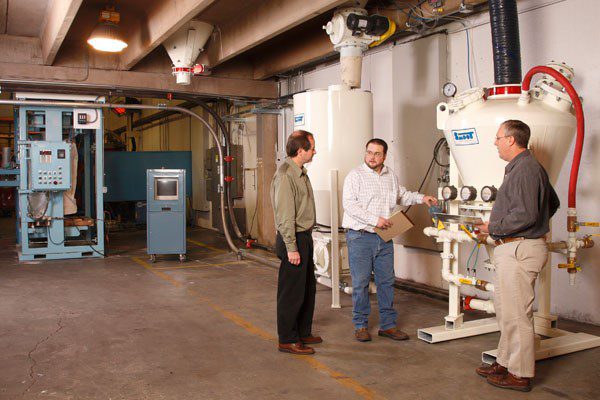
“Bob the Builder, Can we fix it? Bob the Builder, Yes we can!”
-- From the Keith Chapman award winning TV Show “Bob the Builder”
One of the most frequent questions we get asked from people who are contemplating installing a pneumatic conveying system for the first time is: “Can you convey my material pneumatically?"
The good news is: The answer to this question (as long as it is a dry solid material that is less than golf ball sized) is almost always “Yes!”
The bad news is: That’s not always the question the customer should be asking.
A better question is often: “Can you convey my product efficiently and will it still look like I want it to when it gets there?”
Whoa! That’s a whole different question there Tex!
“Oz never did give nothing to the Tin Man And Cause never was the reason for the evening Or the tropic of Sir Galahad” - “Tin Man” Written by Dewey Bunnell and performed by “America”
Pneumatic conveying is about airspeed (velocity) and force (pressure). If you have enough of it, you can move a house with air. Being based in Kansas, (insert Dorothy joke here) a tornado is proof of that. The only thing is…you might not like the way the house looks after it gets moved.
Because there are different types of needs for different types of products, manufacturers of pneumatic conveying systems have developed different types of systems. From fan based (low pressure / high velocity) airlift systems to compressor based (high pressure / low velocity) dense phase systems, customer products and processes can vary widely. While some systems manufacturers may only offer particular types of systems or convey modes (i.e. vacuum vs. pressure) others can range the full gambit.
For assistance in designing the proper system, Smoot Company has even developed a material test lab to help test product conveying and characteristics prior to fabrication. Just like Bob the Builder, this allows us to “measure twice and cut once” making everyone happier with the finished job.
Submitted By: Larry Eagan | Regional Sales Manage
Related Post
Predictive Maintenance Part Three: Predicting the Future of Industrial Systems
Predictive Maintenance Part One: The Lifecycle Advantage for Maximizing ROI
Digital Transformation in Mining: The Systems Integrator’s Prospect